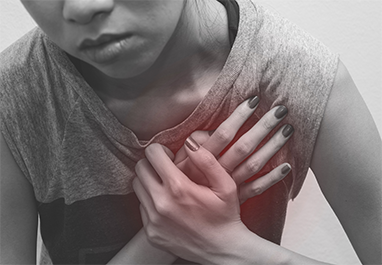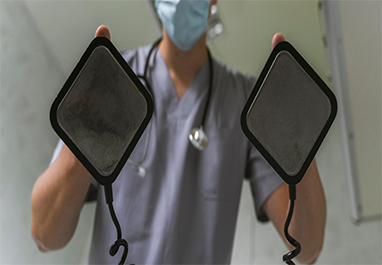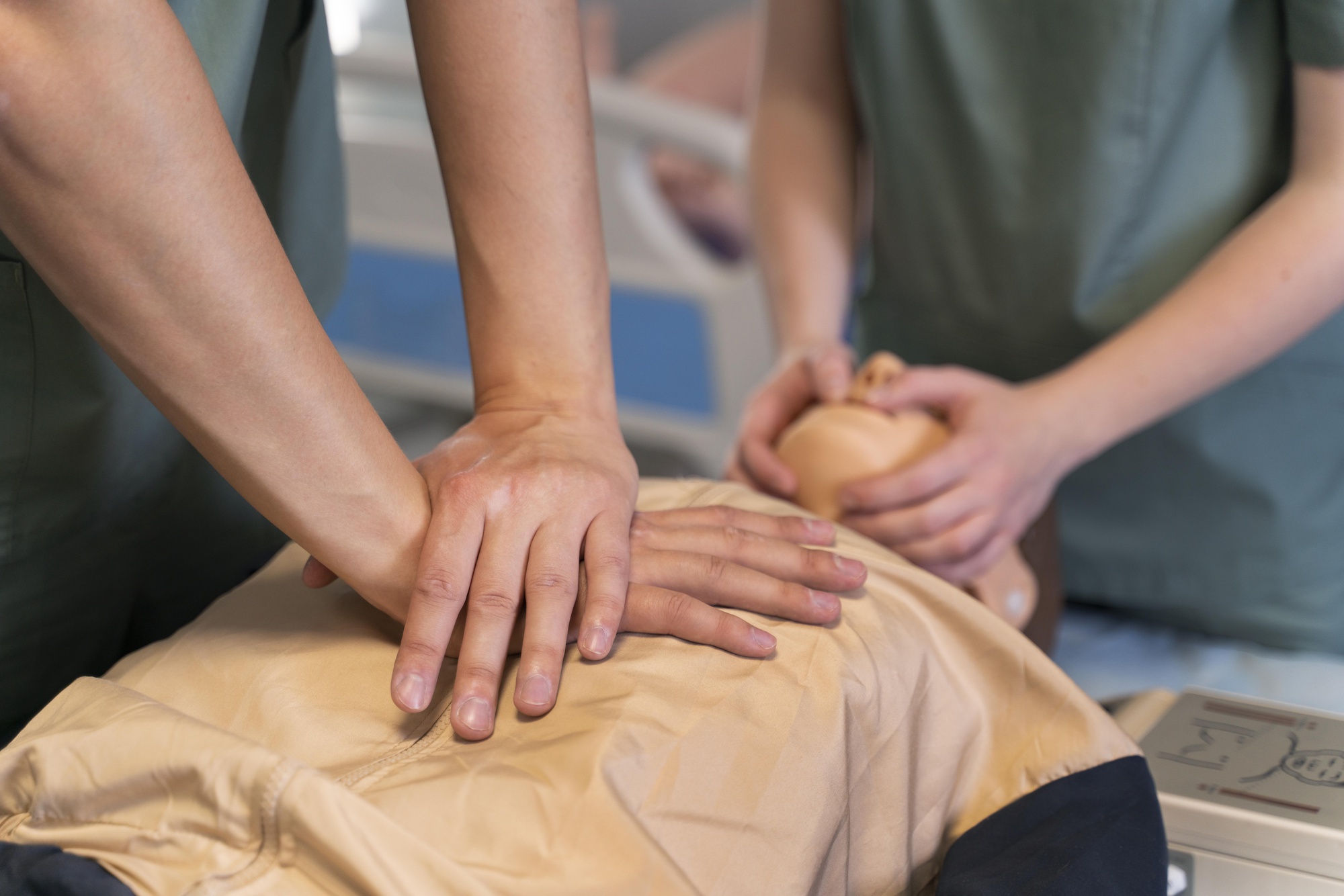Boardline - 022-69318000 / 69301000 | Casualty - 022-69318063 / 64 / +91 86579 07754 | Ambulance - +91 97692 50010 / 75063 58779
Examining the causes, symptoms, and life-saving measures for Sudden Cardiac Arrest (SCA), along with the importance of public awareness and preparedness.

Sudden Cardiac Arrest (SCA) is a life-threatening emergency that occurs when the heart unexpectedly stops beating. The result is that blood stops pumping throughout the body, including to the brain and other vital organs. Without immediate lifesaving measures, it leads to death within minutes.
How do you know if someone has a Sudden Cardiac Arrest? A person who suffers SCA suddenly loses consciousness and collapses. They appear lifeless with no breathing and absence of a pulse. There may be some gasping and shaking of the arms and legs for a few seconds. While it may be a bolt from the blue, there can also be noticeable symptoms such as chest pain, profuse sweating, or giddiness just prior to the event.
Is Sudden Cardiac Arrest the same as a Heart Attack?
No. A heart attack is like a plumbing problem of the heart and occurs when blood flow to the heart is blocked or reduced, resulting in death of a portion of the heart muscle. In patients with a heart attack, the heart is generally still beating and the patients are conscious and able to communicate.
In Sudden Cardiac Arrest, there is an electrical malfunction in the heart which causes the heart to stop beating and the patient becomes unresponsive. While some heart attacks do cause a sudden cardiac arrest, many heart attacks do not. Also, sudden cardiac arrest often results from many other causes.
What causes Sudden Cardiac Arrest?
SCA can result from diseases of the heart such as acute heart attacks, abnormalities of the heart muscle (thickening or scarring), or abnormalities of the heart’s electrical system. It can also result from external causes such as drowning, trauma, asphyxia, electrocution, brain strokes, fits, drug overdose, a blow to the chest, or abnormalities in blood chemistry. Underlying heart disease is by far the commonest cause, though it may not be known in up to half the victims.
How common is Sudden Cardiac Arrest?
It is a leading cause of death worldwide in adults above the age of 40 years. While reliable estimates for our country may not be available, about 350,000 people experience SCA every year in the USA and around 100,000 in the UK. We expect the number to be much higher in India.
Who are the people who are at risk of Sudden Cardiac Arrest?
It can affect anyone regardless of age, gender, prior health problems, or fitness levels. However, it is most common in middle-aged men between 40 to 60 years who commonly have at least one risk factor such as smoking, diabetes, or high blood pressure. With the exception of patients with poor heart function, it is very difficult to specifically pinpoint individuals at higher risk for SCA.
Why is Sudden Cardiac Arrest an important public health problem?
Out of hospital SCA is a leading cause of death which can occur in seemingly healthy people at home or in public places. While it is most common in middle-aged adults—especially males—it can strike people of all ages, including, albeit less frequently, children and young adults. In many cases, it may be the first indicator of a heart problem. In about a third to half of the victims, the event is witnessed. Immediate recognition and treatment by bystanders while waiting for an ambulance and medical help can save lives.
Why is public awareness of Sudden Cardiac Arrest important?
Global experience has shown that media-supported public awareness campaigns and training of laypersons have reduced delays in treatment and improved the survival rates of victims.
How should Sudden Cardiac Arrest be treated?
Immediate treatment includes Cardiopulmonary Resuscitation (CPR) and the use of defibrillators to shock the heart if needed. Treatment must be provided within 3-5 minutes for it to be effective. Even the fastest emergency medical services in advanced countries may not be able to reach a victim this quickly. Prompt action by bystanders is critical as it greatly improves the chances of survival.

CPR or Cardiopulmonary Resuscitation is a life-saving medical procedure for persons who have experienced cardiac arrest. It involves giving compressions to the victim’s chest and intermittently providing rescue breaths. While CPR does not restart the heart, it keeps the heart pumping and maintains a partial oxygen flow throughout the body. This delays tissue death and extends the brief window of opportunity to revive the heart without permanent brain damage. Early administration of a shock, termed defibrillation, is commonly needed to restore a normal heart rhythm.

An AED or Automated External Defibrillator is a device that automatically analyzes heart rhythms and decides whether a shock is needed. The shock is delivered through pads placed on the victim’s chest. This shock temporarily stuns the heart, stopping abnormal electrical activity and allowing a normal rhythm to resume.
Can a lay person use an AED?
Yes. AEDs are designed for use by anyone. Some devices shock automatically, while others prompt the operator to press a button to deliver the shock.
Are AEDs safe?
AEDs are designed to deliver shocks only when needed. Basic precautions, such as not touching the victim during the shock, ensure the safety of the rescuer and bystanders.
Are AEDs really necessary?
Early shocks dramatically increase a victim’s chances of survival. While CPR alone offers a 5% chance of survival, timely CPR combined with AED use can increase survival up to 50%. This is why the widespread availability of AEDs is so important.
Do AEDs replace the use of CPR?
No. CPR remains very important. AEDs are designed only to treat victims with abnormal heart rhythms (ventricular fibrillation or tachycardia). Victims with other heart rhythm problems benefit from CPR.
Media support to create awareness, improved availability and response times of ambulances, and equipping all ambulances and public places with AEDs are crucial. Additionally, CPR-AED training should be mandatory for all high school/college students and public servants. Authorities must also ensure that bystanders who help are not harassed.
Dr. Snehal Kothari, Cardiologist at Lilavati Hospital